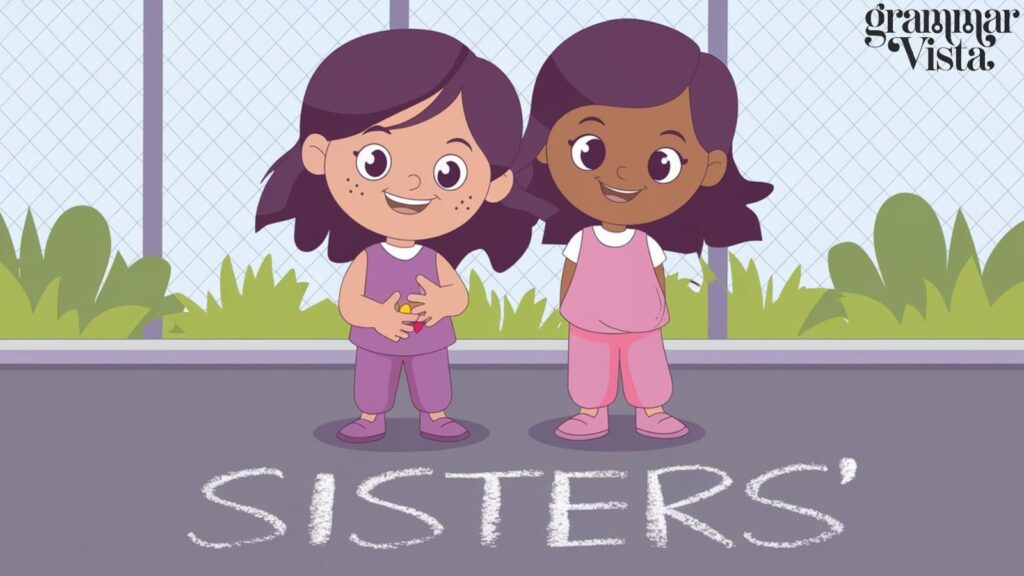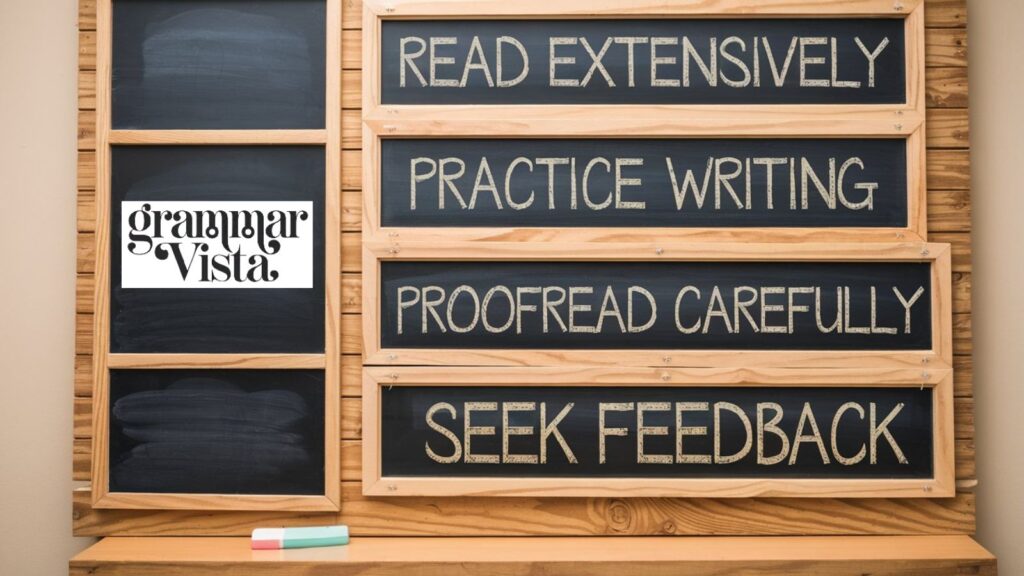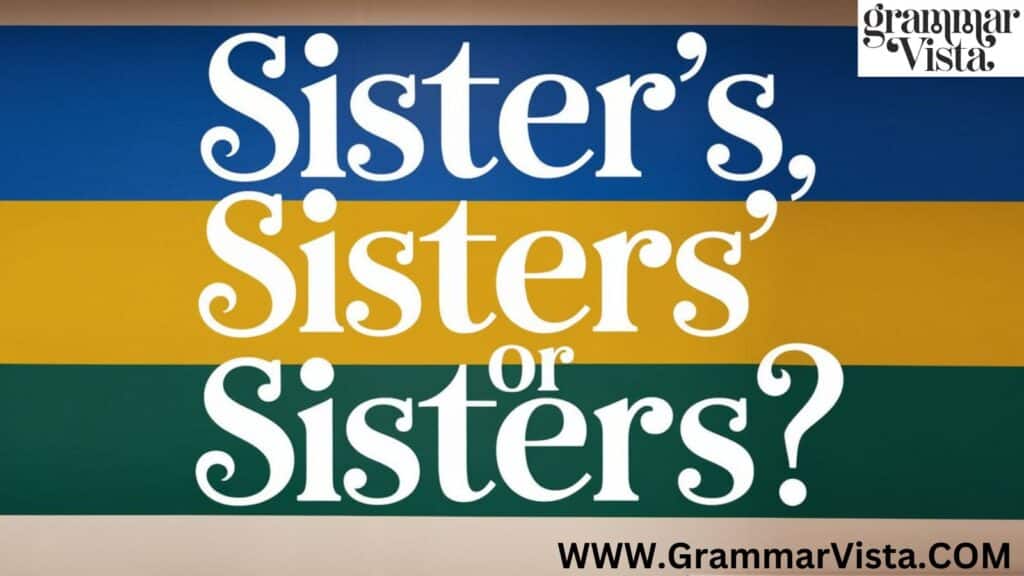Ever found yourself scratching your head over whether to write “sister’s,” “sisters’,” or just plain “sisters”? You’re not alone. As a seasoned writer and grammar enthusiast, I’ve seen countless folks stumble over this tricky trio. But fear not! We’re about to embark on a journey through the wild world of possessives and plurals that’ll sharpen your linguistic skills and boost your confidence in no time.
The Singular Possessive: Sister’s

Let’s kick things off with “sister’s.” This form shows that something belongs to one sister. It’s the singular possessive – a nifty little grammatical tool that helps us express ownership.
For example:
- My sister’s car broke down yesterday.
- Have you seen Sarah’s sister’s new haircut?
In these cases, we’re talking about one sister and something that belongs to her. The apostrophe before the ‘s’ is your clue that we’re dealing with possession, not plurality.
Welcome to the world of Spiritualsonic, where spirituality meets sound. Discover how this unique practice can transform your life. Dive into the origins, history, and essence of Spiritualsonic. Unveil its mysteries and benefits.
The Plural Possessive: Sisters’

Now, let’s say you’ve got more than one sister, and they all own something together. That’s where “sisters'” comes into play. This is the plural possessive form, used when multiple sisters share ownership of something.
Consider these scenarios:
- The sisters’ house is always full of laughter.
- I can’t keep up with my sisters’ busy schedules.
Here, the apostrophe after the ‘s’ indicates that we’re dealing with multiple sisters who collectively possess something.
Read More about Business’ or Business’s?
The Plural Form: Sisters

Sometimes, you just want to talk about more than one sister without any possession involved. That’s when you use the simple plural form: “sisters.”
For instance:
- I have three sisters.
- The Smith sisters are all doctors.
No apostrophe needed here – we’re simply referring to multiple sisters.
Grammar Rules: The Nitty-Gritty of Apostrophe Usage
Understanding the difference between these forms is crucial for mastering apostrophe usage. Here’s a quick breakdown of the grammar rules:
- For singular possession, add ‘s to the end of the word.
- For plural possession of a word ending in ‘s’, add an apostrophe after the ‘s’.
- For simple plurals, just add ‘s’ (or ‘es’ in some cases) – no apostrophe needed.
These rules apply not just to “sister,” but to most nouns in English. Language mastery comes from recognizing these patterns and applying them consistently.
Example Sentences: Putting It All Together
Let’s dive into some more example sentences to really cement these concepts:
- My sister’s cat is always getting into mischief. (One sister owns one cat)
- The sisters’ apartment is on the top floor. (Multiple sisters share one apartment)
- I’m meeting my sisters for lunch today. (Multiple sisters, no possession involved)
- Sarah’s sister’s friend’s dog won a prize at the show. (Multiple singular possessives in a row)
- The sisters’ parents are coming to visit next week. (The parents of multiple sisters)
Different Forms in Action: A Day in the Life
Imagine a typical day in a household with multiple sisters. You might encounter all these forms in various situations:
- Sarah’s alarm clock goes off at 6 AM. (Singular possessive)
- The sisters’ shared bathroom is always occupied in the morning. (Plural possessive)
- “Sisters, breakfast is ready!” Mom calls from downstairs. (Simple plural)
- Emily’s sister’s car keys are missing again. (Two singular possessives)
- The sisters argue over whose turn it is to do the dishes. (Simple plural)
This scenario showcases how these different forms can pop up in everyday life, highlighting the importance of understanding their proper usage.
You might be interested in 15 Other Ways to Say “Looking Forward to Talking to You”
Expert Insights: Common Mistakes and How to Avoid Them

As someone who’s spent years honing their language proficiency, I’ve noticed some common pitfalls when it comes to using these forms. Here are a few expert insights to help you avoid them:
- Don’t use an apostrophe for simple plurals. “I have two sister’s” is incorrect.
- Be consistent with plural possessives. If you’re talking about something owned by multiple sisters, make sure you put the apostrophe after the ‘s’.
- Watch out for compound constructions. In phrases like “my sister-in-law’s house,” the apostrophe goes at the end of the entire compound noun.
Sentence Structure: Beyond Possessives
While we’re focusing on possessives and plurals, it’s worth noting that mastering these forms is just one aspect of sentence structure. As you work on perfecting your use of “sister’s,” “sisters’,” and “sisters,” also pay attention to how these words fit into the broader context of your writing.
For example:
- My sister’s enthusiasm for life is contagious. (Subject + possessive noun + verb)
- Despite their differences, the sisters’ bond remained unbreakable. (Prepositional phrase + plural possessive noun + verb)
- Sisters often share a unique connection that transcends words. (Simple plural as subject + verb + object)
Linguistic Skills: Applying Your Knowledge
Now that we’ve covered the basics, let’s talk about how to apply this knowledge to enhance your overall linguistic skills. Understanding the nuances of possessives and plurals isn’t just about getting apostrophes right – it’s about communicating clearly and effectively.
Consider these scenarios:
- Writing a family history: Accurate use of possessives can help clarify relationships and ownership across generations.
- Crafting a legal document: Precision in language, including correct possessive forms, is crucial in legal writing.
- Telling a story: Proper use of these forms can add clarity and depth to your narrative, helping readers keep track of characters and their belongings.
Grammar Forms: Beyond ‘Sister’
The principles we’ve discussed for “sister” apply to many other nouns in English. Let’s look at some example sentences with different nouns:
- The dog’s bowl is empty. (Singular possessive)
- The dogs’ kennel needs cleaning. (Plural possessive)
- I love watching dogs play in the park. (Simple plural)
- The teacher’s lesson plan was impressive. (Singular possessive)
- The teachers’ lounge is off-limits to students. (Plural possessive)
- Good teachers inspire their students daily. (Simple plural)
Seasoned Writer’s Tips: Polishing Your Skills

As a seasoned writer, I can tell you that mastering these distinctions takes practice. Here are some tips to help you along the way:
- Read extensively: Exposure to well-written material will help you internalize correct usage.
- Practice writing: Try crafting sentences that use all three forms in different contexts.
- Proofread carefully: When reviewing your work, pay special attention to apostrophe placement.
- Seek feedback: Don’t hesitate to ask for input from others who have strong language mastery.
Language Mastery: The Bigger Picture

Remember, understanding the difference between “sister’s,” “sisters’,” and “sisters” is just one piece of the puzzle when it comes to language mastery. As you continue to develop your linguistic skills, you’ll find that this knowledge fits into a broader understanding of English grammar and usage.
Consider how these forms interact with other aspects of language:
- Verb agreement: “My sister is coming” vs. “My sisters are coming”
- Pronoun usage: “Her book” (referring to one sister) vs. “Their book” (referring to multiple sisters)
- Adjective placement: “My eldest sister’s car” vs. “My sisters’ old car”
Expert Insights: Why It Matters

You might be wondering, “Does it really matter if I mix up these forms?” As someone who’s spent years honing their grammar expertise, I can confidently say: yes, it does. Here’s why:
- Clarity: Using the correct form eliminates ambiguity and ensures your meaning is clear.
- Professionalism: In academic or professional settings, proper grammar reflects well on you.
- Effective communication: Precise language helps you convey your thoughts more accurately.
Sentence Structure: Putting It All Together
As we wrap up, let’s look at how understanding these forms can enhance your overall sentence structure. Consider this paragraph:
My sister’s passion for baking inspired her to open a bakery. The sisters’ shared love of sweets made it a family affair. Soon, all three sisters were involved, turning their hobby into a thriving business. The sisters’ bakery became famous for its delicious pastries and warm atmosphere.
Notice how the different forms work together to paint a clear picture of ownership and relationships throughout the story.
Read More grammar lessons on GrammarVista
Conclusion
In conclusion, mastering the use of “sister’s,” “sisters’,” and “sisters” is a valuable step in your journey towards language proficiency. By understanding and applying these grammar rules, you’re not just improving your writing – you’re enhancing your ability to communicate effectively in all areas of life. So keep practicing, stay curious, and watch your linguistic skills soar!







